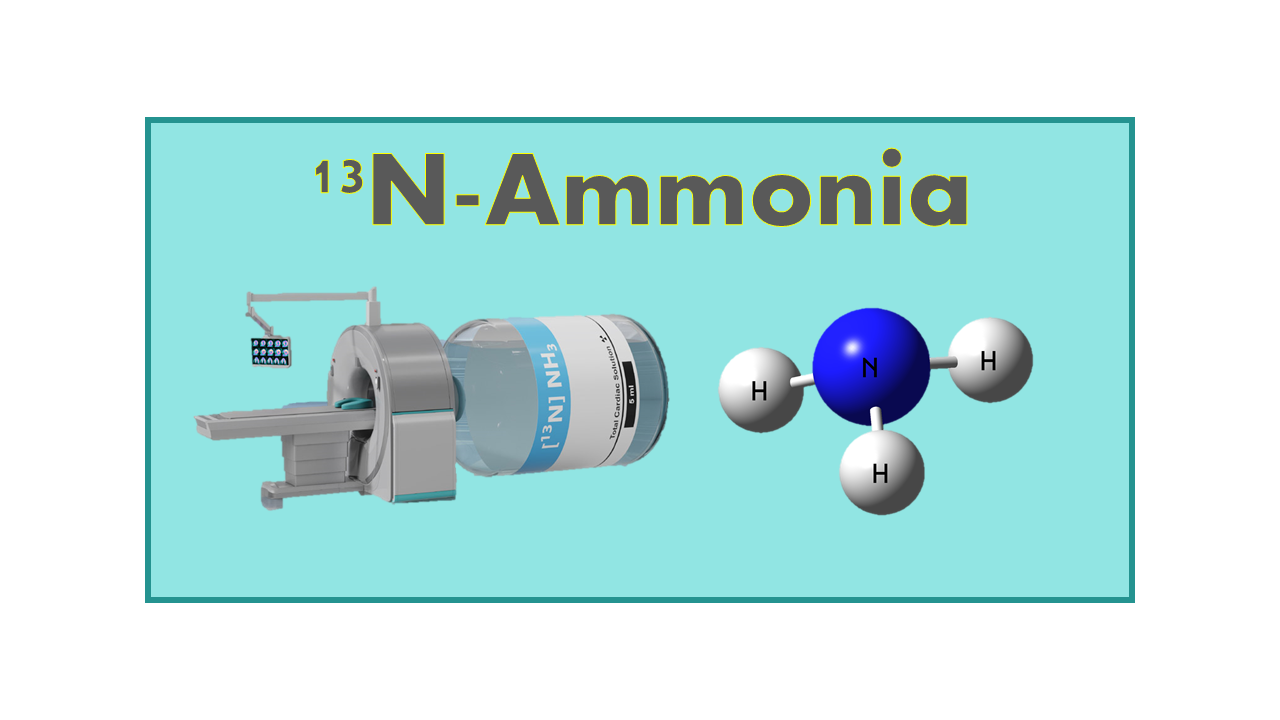
13N-Ammonia
March 28, 2024
Description
13N-Ammonia is a very short half-life tracer used in cardiology. It is, in the majority of cases, obtained from local production in centers that do have access to an in-house cyclotron equipped with dedicated targets. Japan is the major market using 13N-Ammonia, as a consequence of the very high density of hospital-located cyclotrons in this country (almost 200).
Clinical applications
13N-Ammonia is an ideal flow tracer allowing repeat rest and stress MPI with negligible waiting time. 13N-Ammonia accumulates into myocardial cells by linear extraction over an acceptably wide range of flow. Results are independent of metabolism and the product delivers low radiation to patients and staff. In cardiology the gold standard remains 15O-water but its very short half-life (2 min) compared to 13N-ammonia (9.8 min) makes the latter an excellent alternative. The typical dose used for imaging is 10 to 15 mCi given over a 20 to 30 sec interval. In terms of toxicity, target tissue is bladder wall.
Availability
Depending upon the energy of the cyclotron, such equipment is able to produce between 75 and 500 mCi per run in about 15 to 30 min. A rest scan and a stress scan need about 15 mCi injected dose each. Knowing that about 3–5 min post EOB are needed for QC release and a minimum of 3–5 min for transport, one can deduce that a minimum EOC dose of 70 mCi is required for the two patient doses. Each 10 min supplementary travel distance doubles the amount of tracer needed EOB to get the appropriate amount at the hospital. In other words, if the cyclotron is able to produce about 500 mCi/run this would allow a transport distance of about 30 min. Therefore, despite the short half-life of 13N-Ammonia some rare companies (NCM US, SOFIE, PETNET, Cardinal Health) managed to sell doses of 13N-Ammonia to customers located at less than 30 min transportation distance. The other centers that obtained the MA just use their doses within their hospital (in the US Feinstein Institute, Houston Cyclotron Partners, Precision Nuclear, Shertech Laboratories, Mayo Clinic). Doses sold outside of their manufacturing centers are actually available only in the US where sale’s prices depend upon the number of patients that will be treated with the same batch. Prices are between about US$ 250 (EUR 190) and US$ 500 (EUR 380), but reimbursement is only based on about US$ 250 (EUR 190).
The special PET network created in Japan (cyclotron next to cameras within hospitals) has helped develop this technology in several centers, next to or in competition with the use of 15O-Water for the same indication in cardiology.
Competition
Alternatives in cardiology to 13N-Ammonia include 15O-water, 82Rb-chloride and in SPECT of course the 99mTc-labeled compounds (Sestamibi and Tetrofosmin). However, a recent (2019) comparison between 13N-Ammonia, 82Rb and 99mTc-labeled tracers in cardiology imaging, especially for congenital heart disease (CHD) patients who face repetitive scanning, showed that among these tracers, radiation dose was lowest with 13N-Ammonia PET.
Comments
The short half-life of Nitrogen-13 will continue limiting applications of 13N-Ammonia to clinical research purposes. As cardiology is the largest imaging market (but only SPECT), several development approaches are aimed at developing PET alternatives to 13N-Ammonia or 15O-Water. The current best solution is the use of 82Rb based on an 82Sr/82Rb generators. Some 18F– labeled molecules for cardiology are still under development (18F-Flurpiridaz, 18F- FCPHA).
For local use, table-top cyclotron solutions for the quick local production of 13N-Ammonia are under development and may also become an alternative.